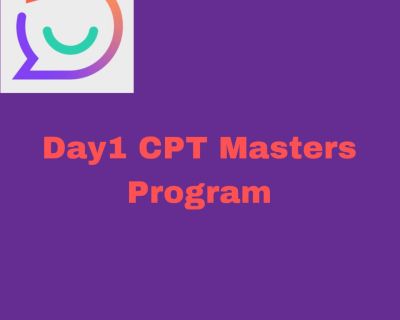Introduction:
IELTS Writing Task 1 plays a crucial role in your overall IELTS score. Understanding how it is scored is essential for success. In this article, we will delve into the scoring system of IELTS Writing Task 1, exploring its components, assessment criteria, and offering tips to help you maximize your score. Let’s unlock the secrets that will pave your way to triumph!
Understanding the IELTS Writing Task 1
Firstly, let’s clarify what Writing Task 1 entails. In this task, you will be presented with a graph, chart, table, or diagram to describe, summarize, or explain. It assesses your ability to organize information, analyze data, and present key features.
It’s crucial to note that there are two versions of Writing Task 1: Academic and General Training. While Academic focuses on deciphering and interpreting visual data, General Training requires addressing the specific requirements of a given letter.
To score well, you need to demonstrate task achievement and coherence.
Breaking Down the Assessment Criteria
To better understand how your Task 1 response is scored, let’s break down the assessment criteria:
Task Achievement / Task Response
-
Academic Task 1: Capturing the Essence of Visual Data
When analyzing visual data, focus on the main trends, comparisons, and significant details. Identify the key features and highlight them effectively. -
General Training Task 1: Addressing the Requirements of the Letter
Ensure that you fulfill the purpose of the letter, responding to all prompts, expressing relevant ideas, and maintaining an appropriate tone.
Key factors contributing to high Task Achievement scores include accurate information, relevant comparisons, appropriate conclusions, and a clear connection between the information provided and the prompt.
Coherence and Cohesion
Coherence refers to the logical sequencing and flow of your ideas, while cohesion encompasses the use of cohesive devices to connect and link your sentences and paragraphs.
To enhance coherence, ensure your ideas flow logically and your paragraphs are well-organized. Use cohesive devices, such as transition words and pronouns, to establish smooth connections and create a cohesive piece of writing.
Lexical Resource
The lexical resource assesses your vocabulary range and accuracy. To score well, demonstrate a diverse vocabulary, accurately use words and phrases, and avoid repetition.
Strategies for showcasing lexical sophistication include using synonyms, idiomatic expressions, and advanced vocabulary in a contextual manner. Avoid relying on repetitive vocabulary or overused phrases, as this may lower your score.
Grammatical Range and Accuracy
Your grammatical range and accuracy play a vital role in scoring high in Writing Task 1. Aim to showcase a variety of sentence structures, demonstrate correct punctuation usage, and maintain grammatical accuracy throughout your response.
Diversity in sentence structures, ranging from simple to complex, enhances your score and displays your language skills effectively.
Scoring the IELTS Writing Task 1
Scoring for IELTS Writing Task 1 is conducted using band descriptors. Two examiners assess your work independently to ensure accuracy. Your scores for Task Achievement, Coherence and Cohesion, Lexical Resource, and Grammatical Range and Accuracy are averaged to determine your overall score for Writing Task 1.
Tips for Maximizing Your IELTS Writing Task 1 Score
To shine in the IELTS Writing Task 1, consider the following tips:
Task Achievement / Task Response
-
Fully Address the Prompt: Answer all aspects of the question and provide the required information.
-
Effective Feature Highlighting: Skillfully incorporate the main features and supporting details into your response.
Coherence and Cohesion
- Create a Cohesive Structure: Employ techniques such as paragraphing, logical sequencing, and using appropriate transition words to enhance the readability and flow of your writing.
Lexical Resource
-
Contextual Vocabulary Usage: Expand your vocabulary range and demonstrate contextual understanding by using relevant and appropriate words and expressions.
-
Avoid Repetition: Be cautious of repeating words or phrases excessively. Opt for synonyms or alternate expressions to add variety.
Grammatical Range and Accuracy
-
Show Grammatical Diversity: Utilize a mixture of sentence structures, including complex sentences, to showcase your command of grammar and sentence construction.
-
Identify and Correct Mistakes: Regularly review and practice grammar rules to minimize errors in your writing.
Common Pitfalls to Avoid in IELTS Writing Task 1
To prevent common errors and maximize your score, be mindful of these pitfalls:
-
Over-Generalizing or Missing Key Information: Ensure you include specific details and analyze the data accurately rather than making general statements.
-
Poor Organization and Lack of Paragraphing: Segment your response into paragraphs that address different aspects, highlighting key features and trends clearly.
-
Informal Language or Memorized Templates: Aim for a formal tone and avoid using colloquial language or relying on memorized phrases.
-
Ignoring Data Comparisons and Trends: Analyze the visual data effectively, comparing and contrasting relevant information in your response.
-
Grammar and Spelling Mistakes that Could Be Avoided: Proofread your writing carefully and avoid easily preventable errors that may negatively impact your score.
Analyzing Sample Answers
To learn from the best, dissect high-scoring responses and identify areas of improvement in low-scoring answers. This practice will help you understand the traits of successful writing and recognize common mistakes to avoid.
Practice Techniques for Improvement
Enhance your skills with focused practice techniques:
-
Regularly practice with various types of charts, graphs, tables, and diagrams to familiarize yourself with different visual data.
-
Develop letter-writing strategies for General Training candidates, as letter tasks require specific conventions and structure.
-
Utilize authentic practice materials to simulate real exam conditions consistently.
-
Seek feedback from experts or utilize scoring services to gain insights and pinpoint areas for improvement.
Conclusion
Mastering the IELTS Writing Task 1 is within your reach. By understanding the scoring system, applying the assessment criteria effectively, and implementing the tips and techniques outlined in this article, you can excel in your IELTS preparation. Practice diligently, hone your skills, and pave your way to success!
Remember, the journey may be challenging, but with persistence and dedication, you’ll achieve outstanding results!

















